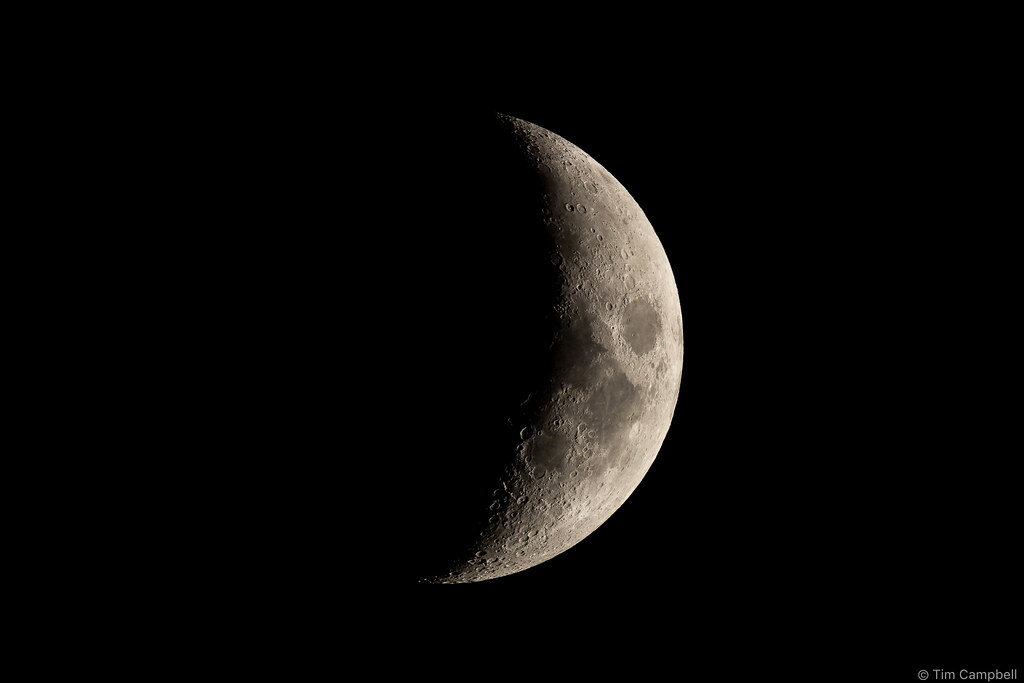What full moon settings would you use?
I read one photographer recently who said that his settings would be:
When using a lens with a focal length (or equivalent) of 600mm or longer:
ISO: 800
Aperture: 6.7 (or close)
Shutter speed: (somewhere between) 1/1250 -1/2500 second
The reason for the high shutter speed is that "moon reflects a bunch of light from the sun."
"If a camera is set to "AUTO" setting, it will "see" all of the darkness (black) of space and try to make it exposed to halfway between black and white -- therefore, increasing the exposure (by a lot!)," he said.
"This increase in exposure will, in turn, wash out ALL features on the moon, and the resulting image will only show a (totally) white circle."
He is using a micro two-thirds camera, so I don't know if that makes a difference with respect to the ISO and all.
He also suggests using monochrome (at least in the post processing).
"As the lunar soil (regolith) is a light, greyish-brown color, it is not very photogenic, and it doesn't show much contrast between brightly lit areas and shadows," he said. This then helps him tweak the contrast and brightness, if needed."
Steve Thomas
I read one photographer recently who said that his settings would be:
When using a lens with a focal length (or equivalent) of 600mm or longer:
ISO: 800
Aperture: 6.7 (or close)
Shutter speed: (somewhere between) 1/1250 -1/2500 second
The reason for the high shutter speed is that "moon reflects a bunch of light from the sun."
"If a camera is set to "AUTO" setting, it will "see" all of the darkness (black) of space and try to make it exposed to halfway between black and white -- therefore, increasing the exposure (by a lot!)," he said.
"This increase in exposure will, in turn, wash out ALL features on the moon, and the resulting image will only show a (totally) white circle."
He is using a micro two-thirds camera, so I don't know if that makes a difference with respect to the ISO and all.
He also suggests using monochrome (at least in the post processing).
"As the lunar soil (regolith) is a light, greyish-brown color, it is not very photogenic, and it doesn't show much contrast between brightly lit areas and shadows," he said. This then helps him tweak the contrast and brightness, if needed."
Steve Thomas

 Untitled
Untitled Supermoon pre-eclipse
Supermoon pre-eclipse













